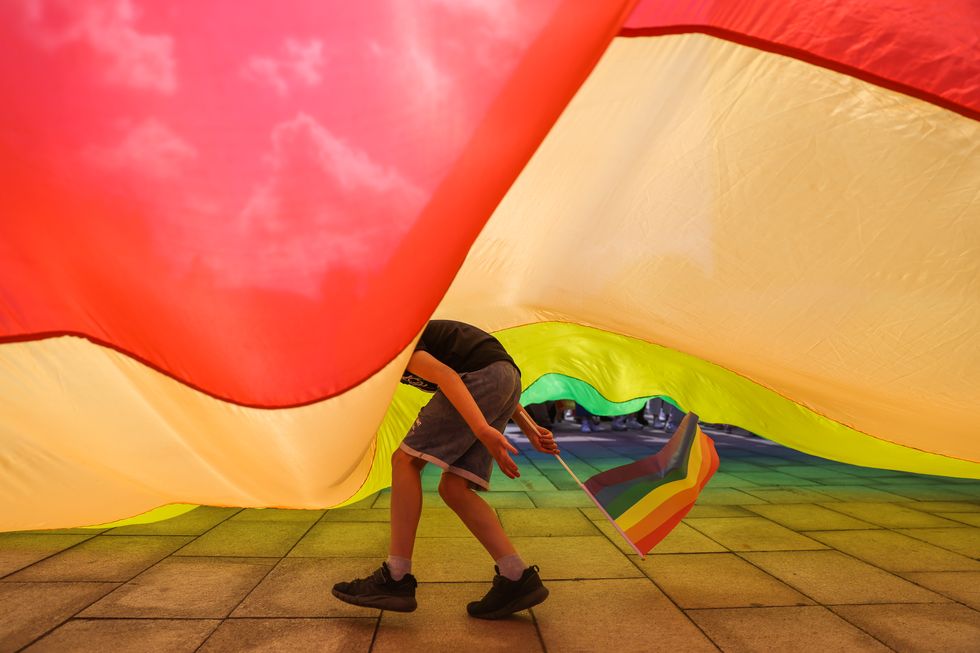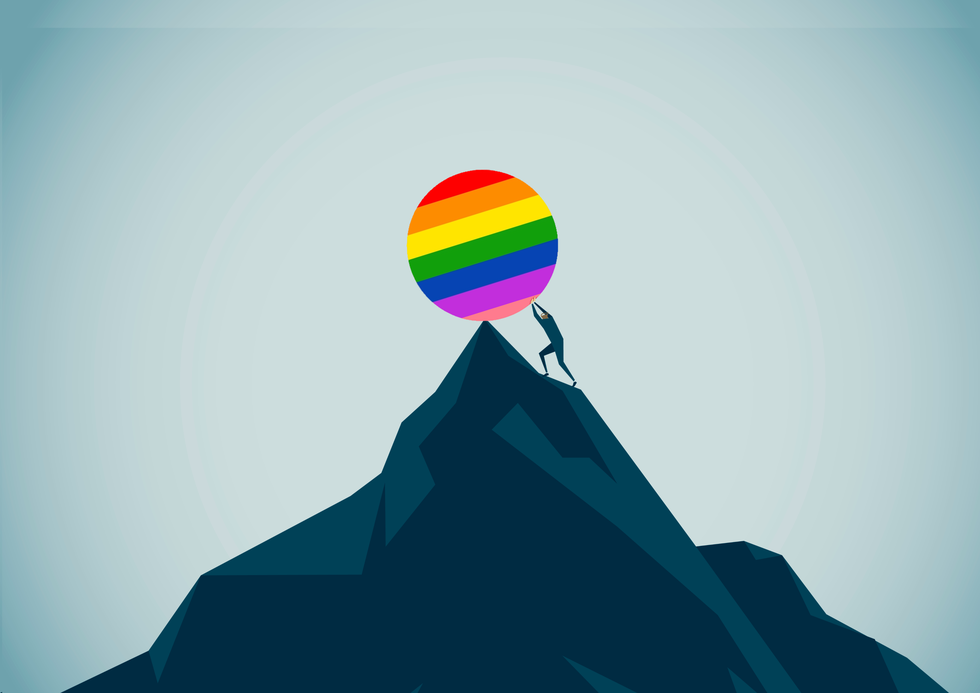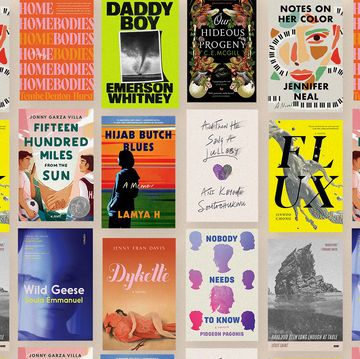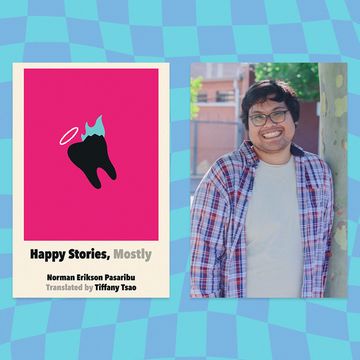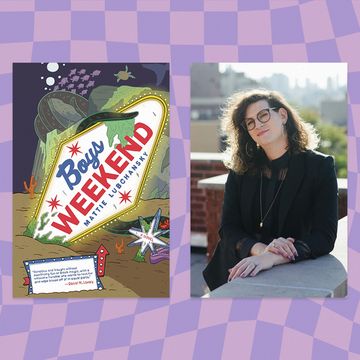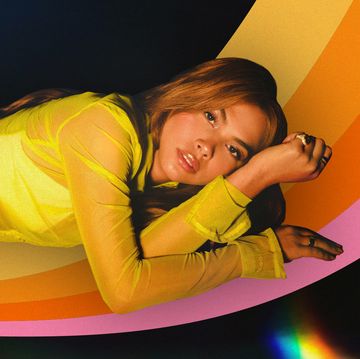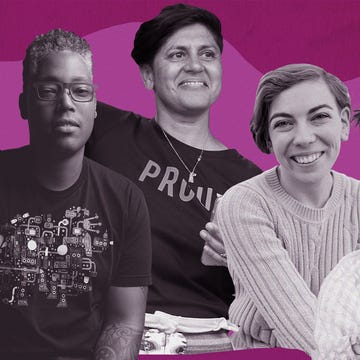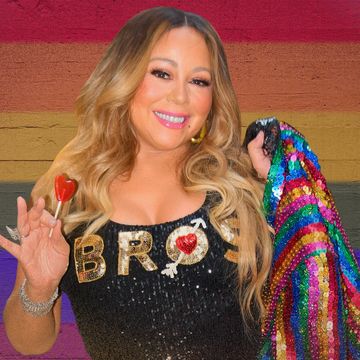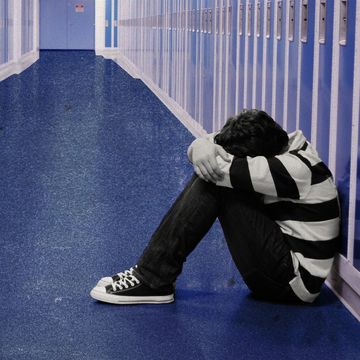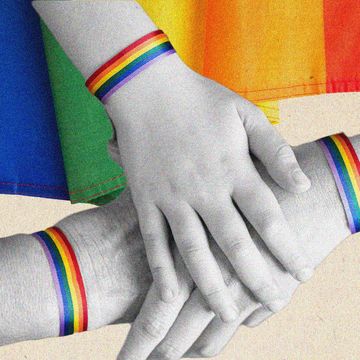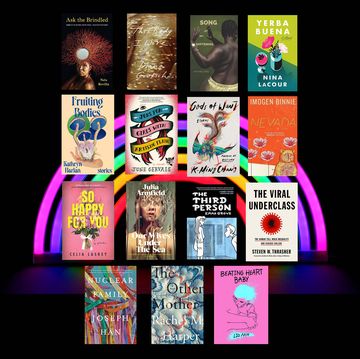In August 2020, I got married to the woman I love, the woman I have always loved, the woman I wasn’t able to love for the past 30 years. It was a Covid wedding, just my kids (ages 11 and 7) beaming, the mayor of the village officiating, our photographer friend photographing, and two nearly 50-year-old ladies finally tying the knot in a paganish New York state civil ceremony at the party dock on the Hudson River. I’m finally with my person. It took two dead parents and the dissolution of a 14-year marriage with children to get here. But better late than never, right?
It might be hard to understand how someone like me — a punk rock feminist from way back, a bleeding-heart lib, a Harvard-trained university professor, and author — took so long to get my head out of my ass and come out of the closet. Why was it so hard to stand up to my parents and the anti-gay culture of the 1980s and ’90s that I grew up in? What did the pressure to conform to the heteronormative lifestyle do to my physical, cognitive, and emotional health?
My personal story of hiding, lying, and punishing myself with dangerous relationships and risky behaviors is the shared story of many who make up the LGBTQ+ community — and it’s killing us. But this isn’t just a historical tale about being gay during the dark ages of the last century. The ill effects are present now, and they may even be worse.
The current social and political climate makes being a member of the LGBTQ+ community a battleground. Our culture has rushed the most personal and private decisions — e.g., whom you have sex with and who you feel you are — into the glaring spotlight where these intimate questions are now dissected, marketed, or glorified on a global scale. Instead of compassion and honest discussion about the moral and ethical responsibility of parents, communities, schools, and organizations in this sensitive topic, fear is ruling the day with new laws setting up restrictions on open discussion of sexual and gender orientations in public schools and sports. Bullying and abuse are widespread, and conservative columnist David Brooks even claims that the U.S.’ dedication to defending LGBTQ+ rights is one of the greatest examples of how America is losing its position as the world leader in globalism and democracy. As a cognitive neuroscientist and person with firsthand experience of what this pressure, attention, and threat can do to stress responses and life choices, I’m deeply worried.
We all know that being part of a group who are marginalized due to sexual orientation, as is the case for our community, is fraught due to a long history of discrimination, including criminalization, classifications as mentally ill, attempted forced conversion, hate crimes and violence, and exclusion from employment, housing, public spaces, and social institutions. But the real damage starts when we are very young, before any of these structural inequities become relevant.
As a girl, I watched, tantalized yet horrified, as art films portrayed the criminalization of gay men in Maurice and Kiss of the Spider Woman, or the street justice meted out to lesbians in Boys Don’t Cry. It obviously wasn’t okay to be gay, especially if you didn’t have family at home who would protect you from the external daggers. When a kid feels unsafe outside, unsafe at home, and unsafe inside herself, it’s easy to internalize these negative feelings.
Even though my parents were left-leaning intellectuals, all those liberal ideas flew out the window when I started showing signs of having an especially close girlfriend in high school. My mom would fly into unbridled rages against the girl, forcing me to choose between two made-up antagonists, my mom versus my friend. Through high school, my mom and I somehow navigated the treacherous waters of living under the same roof, but when college time rolled around, I went to a school situated as far away from my parents as possible.
During my freshman year, newly liberated, I encountered a girl who blew my mind. She took her fashion cues from Judd Nelson in The Breakfast Club with the added flair of a head scarf. She had a tight and tough little body, with pretty, long locks, and a bright, dimpled smile that made my heart ting and my body warm up in all sorts of places. Everyone had a crush on Emily, but for some reason, she liked me. That year, we started making out with each other, along with a lot of other people, and by senior year, we were a couple. That is when I finally told my parents about her, and s--t truly hit the proverbial fan.
I’ll save the details for the memoir, but suffice it to say, when we finally got married in 2020, Emily and I were on version 4.0 of our relationship. Decades of on-again, off-again dating always made me come to the same sad conclusion: My mom said no. And rather than risk losing my mother in a battle between love and family, I always chose my mom.
After each breakup with Emily, the ever-adaptive daughter that I was switched back to romancing men. I took to the task with a vengeance. Along with a constant stream of hookups, I also knew how to party with the best of them, drinking alcohol and taking other recreational drugs like it was medicine that could cure me.
My situation was not unique. Because of the trials and tribulations that come with being closeted, hiding our true selves, and battling the urge to come out, many LGBTQ+ people turn to substances and toxic behavior as a salve. Indeed, compared to their hetero peers, LGBTQ+ people are more than twice as likely to smoke cigarettes, drink alcohol excessively, use illicit drugs, have substance-abuse disorders, and experience major depression. Poor self-care in the lesbian community is reflected in higher proportions of eating disorders, unhealthy weight, and lower physical activity, as well as lower likelihood to get preventive care for cancer.
Gay men are just as vulnerable to the standards of toxic masculinity as straight men, and the more a man subscribes to the 1950s definition of manhood as a big, brawny, dominant, emotionally and physically tough, risk-taking Superman, the lower the chances that he will ask for help when he needs it. The result? A greater risk to his health, the worse his body dysmorphia, and the riskier his behaviors, including with drugs and sex, which puts gay men at greater risk of HIV and STDs, especially among communities of color. On the other side of the coin, gender-nonconforming men and women struggle with worse self-esteem, depression, and anxiety.
Importantly, these outcomes aren’t just the excesses of a gay-as-a-picnic-basket party culture, as research draws a direct line between the threat and stress of discrimination, dangerous lifestyles, and poor health outcomes. Both external (e.g., victimization, discrimination, and teasing) and internalized sexual minority stress (e.g., internalized homonegativity, difficulty processing one’s identity, concealment, acceptance concerns, identity uncertainty) can lead to self-harming behaviors, poor psychosocial functioning, mental illness, and increased signs of chronic stress, including elevated heart rates and high blood pressure. When you perceive yourself to be vulnerable and unsafe from a young age, it’s harder to develop the feeling of safety and self-control necessary to make good decisions in the moment or for the future.
Although it’s hard to change the societal pressures that begin with the phrase “Mazel tov, it’s a girl!” or with the moment we see blue cake at the gender-reveal party, there is a lot we do have control over in terms of our health. This is because so many of the inherent risk factors for the LGBTQ+ community can be deterred via simple lifestyle changes. Given the onslaught of legislation and public shaming about our identities, marriages, families, etc., there has never been a more important time for us to be as powerful, healthy, clear-headed, self-regulated, and compassionate as we can — because the fight for our equality is beginning anew.
It’s time to stop listening to those tired and harmful feminine and masculine standards of beauty and behavior that drive up our stress responses and rob us of our own sense of what makes us feel good in ourselves and our community.
Feeling love and safety can start with taking a deep breath that tells your body and mind that you are in the driver’s seat, reaching out to family or a friend to let them help and give you a hug, and spending time in nature to get away from the grind and get back in touch with your wild, analog self. Also, as obvious as it sounds: Don’t skip regular doctor visits and checkups. Given what we currently face daily and what could be coming down the pike for LGBTQ+ rights, preventative care is just as important as responsive treatment.
Simply put, treat yourself like you are someone who deserves care and love, because you are. By elevating your physical, mental, and emotional health, you are also giving hope to the next generation of young boys and girls that this is what gayness looks like. They are the future of our community, so it’s up to us to model healthy behavior, self-respect, good boundaries, and kindness to ourselves and others. It’s never too late, and as my friend Bob said to Emily and me: Now is the beginning of the rest of your lives.
Dr. Sara C. Mednick is a cognitive neuroscientist at the University of California, Irvine, and author of The Power of the Downstate: Recharge Your Life Using Your Body’s Own Restorative Systems.
Get Shondaland directly in your inbox: SUBSCRIBE TODAY

